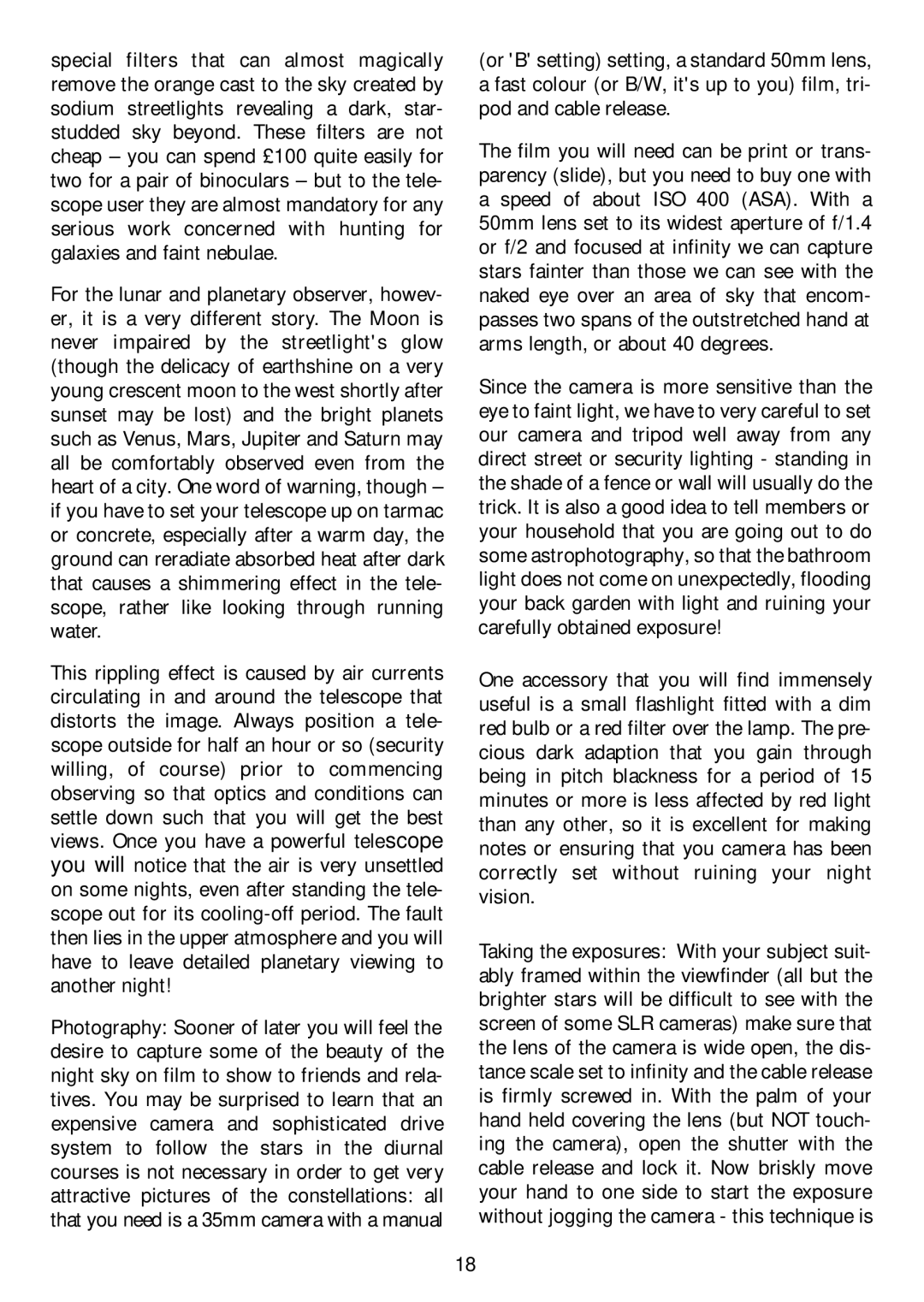special filters that can almost magically remove the orange cast to the sky created by sodium streetlights revealing a dark, star- studded sky beyond. These filters are not cheap – you can spend £100 quite easily for two for a pair of binoculars – but to the tele- scope user they are almost mandatory for any serious work concerned with hunting for galaxies and faint nebulae.
For the lunar and planetary observer, howev- er, it is a very different story. The Moon is never impaired by the streetlight's glow (though the delicacy of earthshine on a very young crescent moon to the west shortly after sunset may be lost) and the bright planets such as Venus, Mars, Jupiter and Saturn may all be comfortably observed even from the heart of a city. One word of warning, though – if you have to set your telescope up on tarmac or concrete, especially after a warm day, the ground can reradiate absorbed heat after dark that causes a shimmering effect in the tele- scope, rather like looking through running water.
This rippling effect is caused by air currents circulating in and around the telescope that distorts the image. Always position a tele- scope outside for half an hour or so (security willing, of course) prior to commencing observing so that optics and conditions can settle down such that you will get the best views. Once you have a powerful telescope you will notice that the air is very unsettled on some nights, even after standing the tele- scope out for its
Photography: Sooner of later you will feel the desire to capture some of the beauty of the night sky on film to show to friends and rela- tives. You may be surprised to learn that an expensive camera and sophisticated drive system to follow the stars in the diurnal courses is not necessary in order to get very attractive pictures of the constellations: all that you need is a 35mm camera with a manual
(or 'B' setting) setting, a standard 50mm lens, a fast colour (or B/W, it's up to you) film, tri- pod and cable release.
The film you will need can be print or trans- parency (slide), but you need to buy one with a speed of about ISO 400 (ASA). With a 50mm lens set to its widest aperture of f/1.4 or f/2 and focused at infinity we can capture stars fainter than those we can see with the naked eye over an area of sky that encom- passes two spans of the outstretched hand at arms length, or about 40 degrees.
Since the camera is more sensitive than the eye to faint light, we have to very careful to set our camera and tripod well away from any direct street or security lighting - standing in the shade of a fence or wall will usually do the trick. It is also a good idea to tell members or your household that you are going out to do some astrophotography, so that the bathroom light does not come on unexpectedly, flooding your back garden with light and ruining your carefully obtained exposure!
One accessory that you will find immensely useful is a small flashlight fitted with a dim red bulb or a red filter over the lamp. The pre- cious dark adaption that you gain through being in pitch blackness for a period of 15 minutes or more is less affected by red light than any other, so it is excellent for making notes or ensuring that you camera has been correctly set without ruining your night vision.
Taking the exposures: With your subject suit- ably framed within the viewfinder (all but the brighter stars will be difficult to see with the screen of some SLR cameras) make sure that the lens of the camera is wide open, the dis- tance scale set to infinity and the cable release is firmly screwed in. With the palm of your hand held covering the lens (but NOT touch- ing the camera), open the shutter with the cable release and lock it. Now briskly move your hand to one side to start the exposure without jogging the camera - this technique is
18
